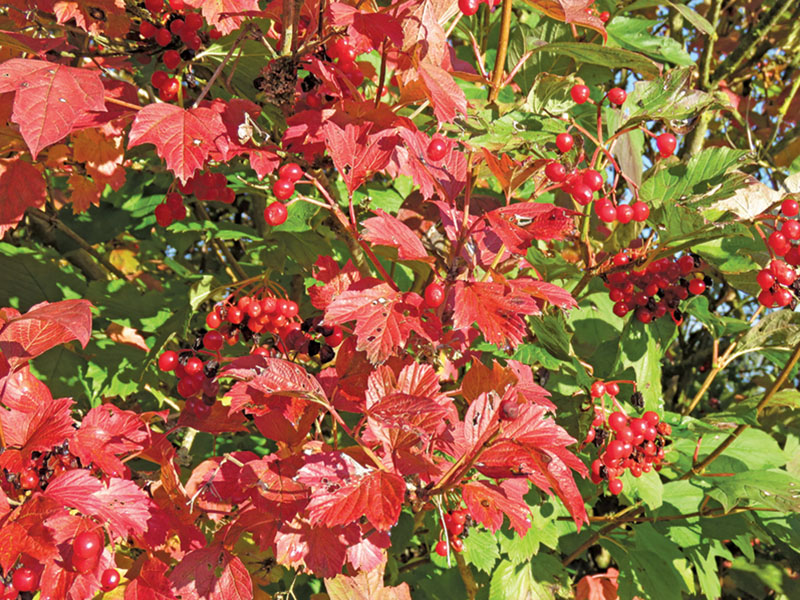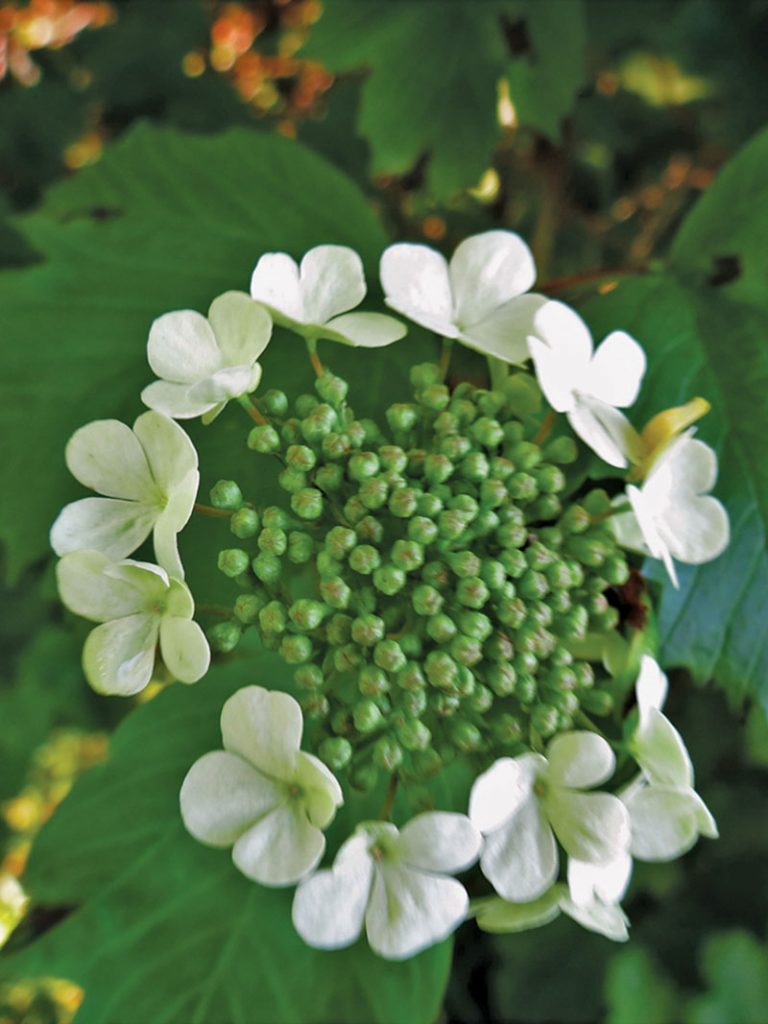Nature notes – November
The Guelder Rose – Viburnum opulus
Birds and insects have featured prominently in recent nature notes. This month I am looking at trees, specifically one tree, the Guelder Rose or Viburnum.

Autumn is arguably the best season to brush-up your tree identification skills; fruits, colourful leaves and eventually bare trunks are all helpful features. The Guelder Rose does not tower above other trees. It can be described either as a small tree or a large bush. It is about 4 metres high when fully grown. As it thrives best on neutral or chalky soils, Guelder Rose is not common where heavy Leicestershire clay is the predominant soil. However, it is native to the UK and is used regularly in amenity planting schemes. Also on nature reserves as it grows readily where suitable soils can be found or created. It is both a beautiful tree and one that offers food and shelter for all manner of wildlife.
Dutch origins
The name ‘Guelder’ is unusual. It is thought to derive from a Dutch word. Gelderland is the largest province in the Netherlands and the ‘u’ has probably crept into the English spelling as the Dutch ‘g’ is pronounced differently to that in English. (If anyone reading this can shed more light on this, I would be pleased to hear from you!)
An autumnal spectacle
As for the tree itself, its flowers, fruits and autumn leaves are all a delight to the eye. The flowers are large white heads of concentric circles of florets that open from the outside first, into the centre of the head. This is very similar to the mop-head hydrangea that is frequently grown by gardeners. The fruits are clusters of glistening red berries, not for human consumption, but important food for birds in autumn and winter, including in some years, exotic waxwings and ‘winter’ thrushes. The leaves have three, sometimes five, ‘lobes.’ a shape that may be familiar to you from Acer and sycamore leaves. They are a bright green colour in spring and summer turning eventually to a red wine colour as the autumn progresses. The trunk, best seen in winter, is buff-brown, sometimes tinged red, with a surface that is an intricate network of shallow ridges.

As trees go, Guelder Rose is, visually, one that gives, and keeps on giving, from spring through to winter.
D Scott




 Walking in the Derbyshire Peak District & Beyond
Walking in the Derbyshire Peak District & Beyond

